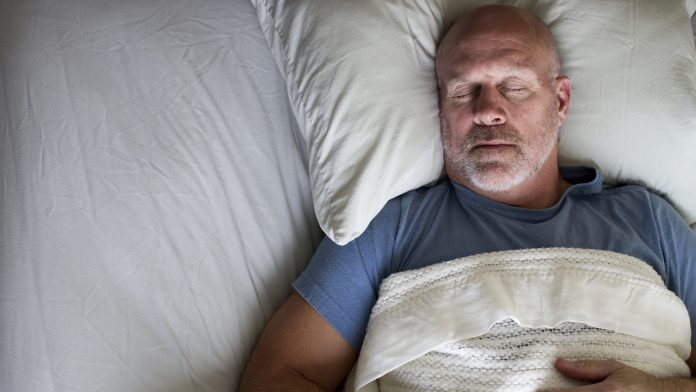
A recent mouse study has illuminated a new possibility for sleep apnoea treatment using specialised channel proteins.
John Hopkins Medicine researchers have found evidence that a protein known as TRPM7, which is found in carotid bodies, could be a potential therapeutic target for sleep apnoea and similar abnormally slow breathing disorders in obese people.
The protein is found in tiny sensory organs in the neck that detect oxygen and carbon dioxide changes, and certain hormones such as leptin in the bloodstream. TRPM7 proteins help transport and regulate the steam of positively charged molecules in and out of the carotid bodies’ cells.
The findings were published in The Journal of Physiology.
What is sleep apnoea?
Sleep apnoea and other sleep-disordered breathing are characterised by breathing that stops and starts throughout sleep and is estimated to affect up to 45% of obese Americans. If this condition is left untreated, it can worsen heart disease progression and diabetes, and cause significant fatigue and death from poor oxygenation.
Lifestyle interventions such as weight loss can release the burden of disordered breathing; however, CPAP can provide long-term relief for sleep apnoea sufferers.
“CPAP actually works for most patients, the fact is that most patients are not adherent to this treatment,” said Lenise Kim, PhD. “So knowing that TRPM7 contributed to high blood pressure and sleep-disordered breathing, we wondered if blocking or eliminating that channel could offer a new treatment target.”
Designing a potential therapeutic target for disordered breathing
Using silencing RNA, the researchers knocked out the gene responsible for the production of the TRPM7 channel protein, reducing the number of TRPM7 channels in the carotid bodies of obese mice. The mice underwent a sleep study, and the researchers observed their breathing patterns for sleep apnoea similarities and blood oxygen levels.
In the obese mice with blocked TRPM7, the researchers found differences in their rates of minute ventilation or the amount of air inhaled and exhaled by the lungs per minute. The obese mice showed a 14% increase in their minute ventilation, 0.83 millilitres of air per minute (mL/min/g) during sleep. The researchers noted that their findings are a significant improvement in ventilation when compared to obese mice with TRPM7, whose average minute ventilation was 0.73 mL/min/g. The findings reveal that the ventilatory capacity in these mice improved whilst they slept, effectively combating the decreased breathing patterns of sleep apnoea.
The researchers found that despite the increased ventilation in obese mice lacking TRPM7, their blood oxygen levels did not increase. To discover this, the researchers exposed the mice to hypoxic environments and monitored their breathing.
“This suggests that treatments designed to reduce or erase TRPM7 in carotid bodies would not be workable for people living in low-oxygen environments, such as those in very high altitudes, or for those with conditions that already limit blood oxygen saturation, such as lung disease,” added Kim.
Further data illuminated that leptin, a hormone which is produced in fat cells and is responsible for curbing the appetite, may increase TRPM7. In obese mice, the increased amount of leptin may lead to an oversaturation of TRPM7. This consequently can result in low respiration levels causing sleep apnoea or other disordered breathing conditions observed in obese mice with TRPM7.
“We have shown that the genetic knockdown of TRPM7 in carotid bodies reduces suppressed respiration in sleep apnoea,” said Vsevolod (Seva) Polotsky, MD, PhD, director of sleep research and professor of medicine at the Johns Hopkins University School of Medicine. “While more research is needed, carotid body TRPM7 is a promising therapeutic target not only for hypertension in obesity but also for abnormal breathing during sleep associated with obesity.”









